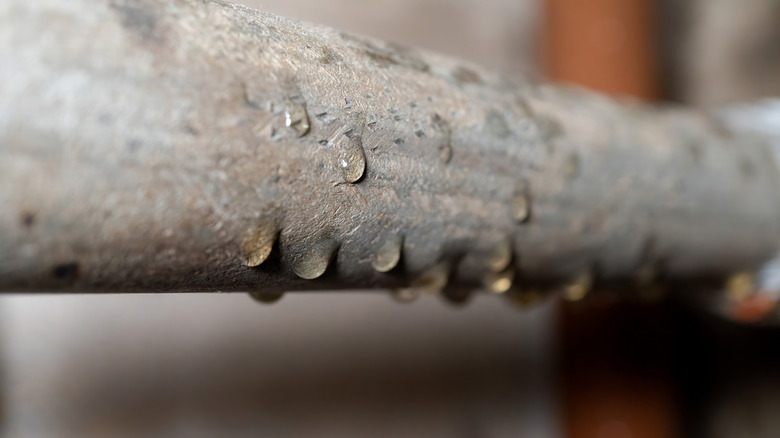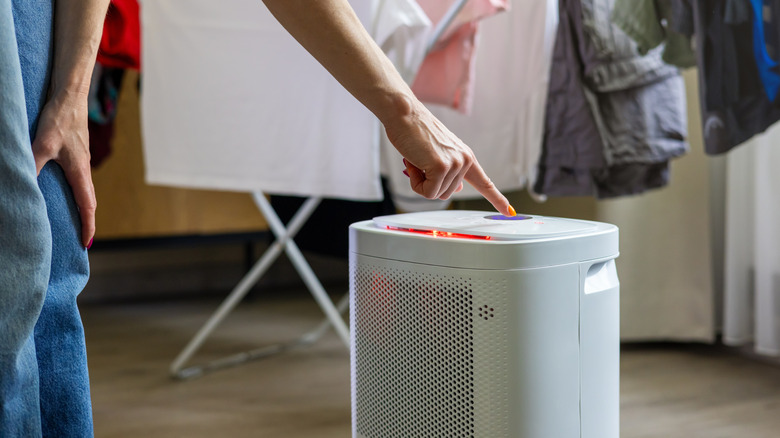The Weather-Related Problem That's Causing Your Pipes To Sweat
If you've noticed moisture forming on your cold water pipes, you might assume that there's a leak. Before you call a plumber, though, take a deep breath. The true culprit could be something much more common: high humidity levels, resulting in sweating pipes. This is the same process that causes a glass of iced tea to form condensation on a hot day. When warm, moist air touches something much cooler, the air cools rapidly to its dew point, which then causes it to shed excess water vapor directly onto the pipes.
While a few drops may seem harmless, consistent condensation creates the ideal environment for mold and mildew to flourish, which can spread from the pipes to nearby organic materials, like wood framing, drywall, and insulation. And what's more, constant moisture speeds up the corrosion and rusting of metal pipes and fittings, which may lead to leaks and pricey failures down the line. Not addressing the issue is one of many plumbing mistakes that can cause more damage than you think.
This situation is considered a weather issue since the muggier it is outside, the more water vapor there is inside your home, worsening condensation as heat rises. The key is understanding the interaction between temperature and moisture. Cold water pipes are designed to (you guessed it) keep water cool, often running at temps well below ambient air temps during warmer months. When indoor relative humidity climbs above 60%, it's almost guaranteed that pipes will accumulate moisture. Solving this problem means breaking the cycle of warm, damp air meeting cold surfaces.
Fix the sweating pipes issue by using a dehumidifier
While wrapping your pipes with foam insulation sleeves is a common, temporary fix that delays the condensation, it doesn't completely solve the core atmospheric problem. The most effective fix for this problem is to manage the source of the excess moisture itself. By directly tackling high humidity, you can bring down the air's moisture content below the dew point of the pipe's surface, and voila. So what's the easiest way to do this? Bring in a dehumidifier. Just avoid these common dehumidifier mistakes.
In problematic spaces like basements, utility closets, and laundry rooms, a correctly sized and placed dehumidifier can draw water vapor out of the air effectively, significantly dropping the overall humidity level. Running the AC in the summer also helps control humidity levels. For most homes, maintaining an indoor relative humidity between 30 and 50% is ideal for both comfort and structural integrity, as well as stopping pipe condensation. Investing in a unit with a continuous drainage option (running a hose to a floor drain) is what we recommend, as it allows the machine to run constantly without the need for you to empty a collection bucket multiple times a day.
Controlling the moisture in these sneaky areas of your home is important for the health of you and your house. It helps safeguard against the creeping damage of mold and rust. Installing a dehumidifier is a good, proactive step that stops this curious weather-related problem at the source, and there are plenty of affordable dehumidifier options on Amazon. Once your home's air is drier, your pipes will stop sweating, and your home will be healthier for it.

